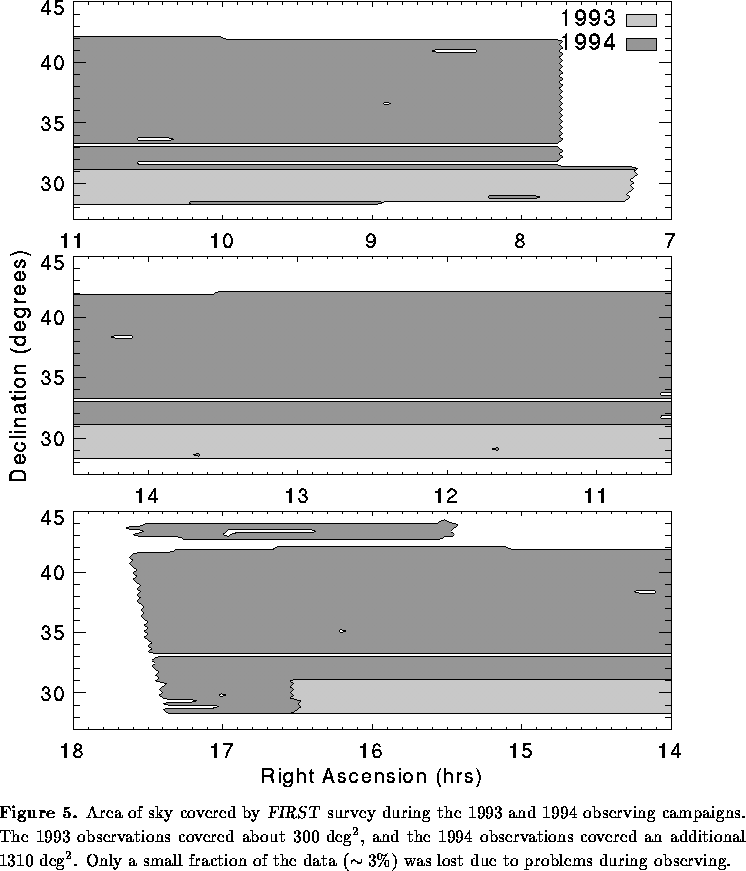Consistent with the above considerations, FIRST comprises a series of
bandwidth synthesis snapshot observations using the 20 cm
system in the B configuration of the VLA. The data are collected in spectral
line mode using 3-MHz channels centered at 1365 and
1435 MHz; an
averaging time of 3 seconds was used initially, although 5-sec averaging is
now the standard data-taking mode. Integrations of 165 seconds duration are
obtained at each of the grid points described above. OBSERVE files are
constructed so that during the course of a 10.5 hour run, all the fields at
a given declination can be observed. The grid utilized is well-matched to
the chosen integration time per field, since the pointing centers are
separated in Right Ascension by 3 minutes over most of the sky. Other
relevant aspects of the VLA common to FIRST and NVSS are
described in Condon et al. (1994) and will not be repeated here.
Only circular polarization modes are recorded. The survey flux density scale is defined by 3C286 which is assumed to have a flux density of 15.00 Jy at 1365 MHz. The data taking in 1994 has been monitored in quasi-real time by Dr. R. Perley, our collaborator at the VLA site. The data are then shipped on 5-Gbyte Exabyte tapes to LLNL for pipeline processing.
The 1993 observations were conducted in a strip near the local zenith; they
cover a region defined by ,
(all coordinates throughout are J2000). A total of 2153
individual fields were observed. The 1994 observing session ran from 4 June
through 10 September and includes a total of 483 hours. These
observations extend the strip northward to
in the RA range
to
; in addition, about 250
observations from the previous year were repeated to fill in missing
data. The exact boundaries of the region covered are shown in Figure 5.
All of the raw data from these pointings are available to any interested user;
the schedule for release of the self-calibrated UV data, the maps, and the
catalogs can be found in the FIRST home page (see § 2.3).
The current plan is to
continue scheduling FIRST observations at 480 hours per configuration
cycle in coming years.
